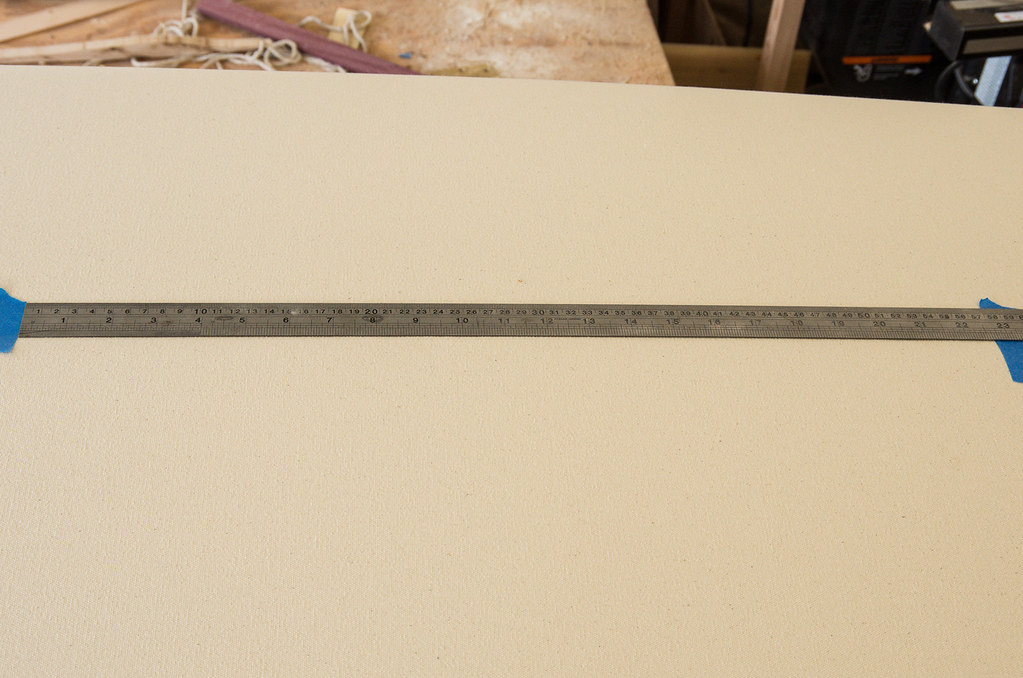Just1moredave
Enthusiastic about Wooden Canoes
The two common books on canoe restoration don't have much detail on how much to stretch the canvas. Both mention wrinkles and puckers. Mike Elliott talks about the sound of a tenor drum. (Find YouTube videos on tenor drums if you, like me, are clueless on musical instruments.) Since I maybe didn't get it right the first time, I thought a lot about how to quantify the stretch. My idea is borrowed from a bandsaw tension gauge. I put down two pieces of blue tape and measured the distance between them when the canvas was slack.
 IMGC5356
IMGC5356
Then stretch the canvas and see how much the distance increases. I started at 22" when the canvas was slack, and ended up at 22 3/4" or ~3.4% more. That's a 19' #10 canvas. Easier if the canoe is upside down.
It's not useful as one data point, except to release tension for adjustments and get back to the same tension. I don't even know if it's the correct tension either. But it's easy to measure and might be useful for people doing multiple canoes.
 IMGC5356
IMGC5356Then stretch the canvas and see how much the distance increases. I started at 22" when the canvas was slack, and ended up at 22 3/4" or ~3.4% more. That's a 19' #10 canvas. Easier if the canoe is upside down.
It's not useful as one data point, except to release tension for adjustments and get back to the same tension. I don't even know if it's the correct tension either. But it's easy to measure and might be useful for people doing multiple canoes.



